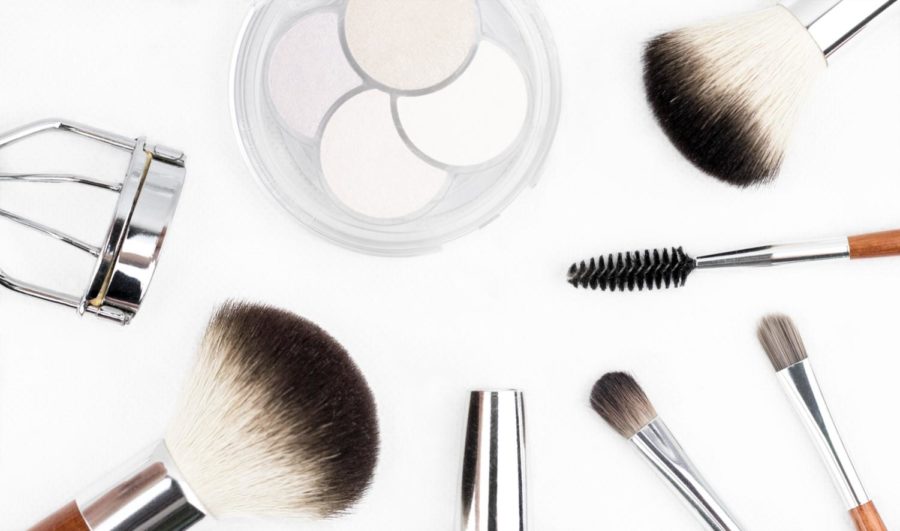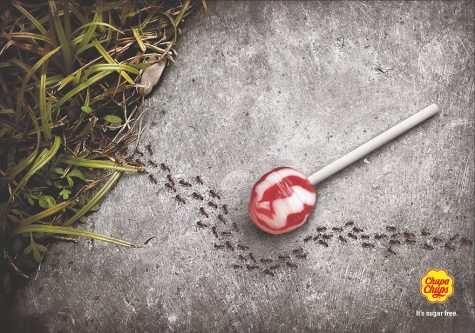Op-ed: The murders behind our makeup
Giddy excitement is what I feel when I walk into Sephora or any other makeup store, thanks to my obsession with cosmetics and dressing up. So much so, I joke with my friends and tell them that it’s practically my second home. For someone who has the art skills of a kindergartner, applying makeup makes me feel like a transformative artist. On days that I feel unhappy and insecure, I hide behind the façade of a bright red lipstick. And on the days that I am confident and upbeat, I perfect my eyes with eyeliner and mascara. And as my love for the art of makeup grows, so does my makeup collection.
Considering my deepening obsession with makeup, it was inevitable that I would discover the controversies surrounding many companies in the makeup industry. I was browsing through makeup tutorials on YouTube, when I came across a video titled ‘Cruelty-free Makeup.’ I was surprised, to say the least. How could something like makeup ever involve cruelty?
Apparently, it can, and I was just starting to uncover the truth behind this. A simple Google search was enough to push me down the rabbit hole of animal testing in the cosmetic industry. And the more I read, the more horrified and sickened I became. I discovered that brands which I used to covet, like MAC and Lancôme, were practicing animals testing for their products.
The requirement to test on animals was first passed in the United States of America in 1938. The United States Food, Drug & Cosmetic Act was signed into law and it required some safety substantiation of cosmetic products, compelling companies to begin testing their products on animals, according to The Humane Society of the United States. This started a snowball effect of many countries following suit to participate in animal testing. Now, according to research by Cruelty Free International and the Dr. Hadwen Trust, at least 15 million animals are estimated to be used in experiments worldwide each year.
Minks are kept in small, cramped wire cages in highly unsanitary conditions, before they are killed in gas chambers and stripped of their fur, which is then used to make mink coats and mink eyelashes.
According to The Humane Society, several of these commonly performed on mice, rats, rabbits, and guinea pigs include skin and eye irritation tests, where chemicals are rubbed on shaved skin or dripped into the eyes of the animals, without any pain relief.
I also came across horrifying videos (warning: they are graphic) that showed how terribly these animals were being treated.
Even products that claim to be cruelty-free, such as mink eyelashes, have been discovered to be highly cruel towards animals. Mink eyelashes, in particular, are made from the fur of minks, which are little ferret-like creatures that should ideally be left in the wild, instead of being bred on farms for their fur.
According to PETA, minks are kept in small, cramped wire cages in highly unsanitary conditions, before they are killed in gas chambers and stripped of their fur, which is then used to make mink coats and mink eyelashes.
The fact that I adore animals aggravated my horror at reading these studies. I had cats and kittens and ducks and rabbits in my own backyard as a child. I loved them and often spent time with them. I could not imagine what it must be like for the animals imprisoned in the labs, living their days out in pain. I felt nauseated and sickened. This was a practice that I was indirectly supporting by buying makeup without checking if it was cruelty-free.
Ameena Almeer, a sophomore at Georgetown University in Qatar, felt a similar kind of horror when she found out about animal testing. She is the president and founder of the Humane Society of GU-Q, which is the university’s animal welfare society. They focus on making students aware of issues such as animal-testing, cruelty-free makeup, and cruelty-free skincare.
“I consciously choose products that are made in an environmentally-sustainable and more humane way. I always choose cruelty-free products, staying away from anything that is animal tested,” she said.
Taking it a step forward, Almeer is also a vegetarian and has practiced it for the past two years. She tries to incorporate vegan products in her skincare and makeup as well.
A vegan product does not contain any animal ingredients or animal-derived ingredients such as honey, beeswax, collagen, carmine, gelatin, and many others. To many, the term ‘vegan’ also means that a product is free from animal testing.
“About three to four months into being a vegetarian, I thought about the wider impact of it and realized that it wasn’t just about being humane towards animals, but it was also about our impact on the environment and animals. It was like a domino effect on how I thought about things,” she explained.
This effect began to change her buying habits, and she started purchasing less leather and fur products.
“It naturally became an issue for me, since this was also around the time I really started enjoying experimenting with makeup. It was a significant chunk of my life that I spent time on and so, it became an issue for me to consider,” Almeer said.
There are other alternatives to animal testing. Harvard’s Wyss Institute has created ‘organs-on-chips’ that contain human cells grown in a state-of-the-art system to mimic the structure and function of human organs and organ systems. Instead of animals, these chips could be used in drug and toxicity testing. They have been shown to replicate human physiology and drug responses since crude animal experiments often do not mimic human pathophysiology.
Other products like the TraumaMan System, which is a human-patient simulator, replicates human torsos in breathing and bleeding. It also has realistic layers of skin and tissue, ribs, and internal organs, and is widely used in surgical procedures that could replace animal testing.
At the end of the day, animals are living, breathing, organisms. To me, it seems unconscionable that they can be imprisoned in labs and experimented upon just to make makeup that will eventually wash off and trickle down the drain.
The seal to my decision to go cruelty-free was when I realized that I would morally hold myself responsible for buying something that I know supports practices of cruelty towards animals. To me, this was a water-tight case, with no excuses left for buying animal-tested products.
It has been 10 months now since I decided to consciously change my lifestyle. Truth be told, I did not immediately chuck out all the makeup I had that wasn’t cruelty-free. But I stopped replenishing it.
To me, it seems unconscionable that they can be imprisoned in labs and experimented upon just to make makeup that will eventually wash off and trickle down the drain.
Even now, I feel the temptation of buying new products that I see on the shelves, often forgetting to conduct my research on these brands. In fact, I am pretty sure I slipped up a few times in the beginning and bought products out of sheer curiosity and want before I realized my mistake. But that’s the part of the learning process. When we make a conscious decision to buy cruelty-free makeup we will be voicing our concerns that will, we hope, eventually phase out animal testing in this industry.
One could argue that individuals changing their buying preferences to cruelty-free will not affect the industry. After all, isn’t this just how big brands function? But I think my actions—our actions—can make a lasting impact because brands look for customer satisfaction and feedback. Makeup companies such as Too Faced, Urban Decay and Kat Von D have ensured their cruelty-free status, while still being a part of the high-end market. Cruelty-Free Kitty will give you a list of brands that sell cruelty-free products. They take in customer feedback, as well as the growing demand for cruelty-free makeup. We, as individuals, can become a part of a bigger movement when we choose to reform ourselves for the better and voice our concerns out to others.

















